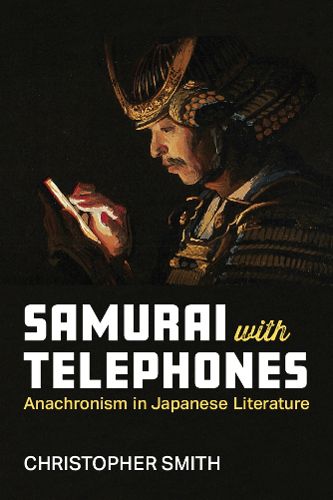Readings Newsletter
Become a Readings Member to make your shopping experience even easier.
Sign in or sign up for free!
You’re not far away from qualifying for FREE standard shipping within Australia
You’ve qualified for FREE standard shipping within Australia
The cart is loading…






What is going on when a graphic novel has a twelfth-century samurai pick up a telephone to make a call, or a play has an ancient aristocrat teaching in a present-day schoolroom? Rather than regarding such anachronisms as errors, Samurai with Telephones develops a theory of how texts can use different types of anachronisms to challenge or rewrite history, play with history, or open history up to new possibilities. By applying this theoretical framework of anachronism to several Japanese literary and cultural works, author Christopher Smith demonstrates how different texts can use anachronism to open up history for a wide variety of different textual projects.
From the modern period, this volume examines literature by Mori Ogai and Oe Kenzaburo, manga by Tezuka Osamu, art by Murakami Takashi, and a variety of other pop cultural works. Turning to the Early Modern period (Edo period, 1600-1868), which produced a literature rich with playful anachronism, he also examines several Kabuki and Bunraku plays, kibyoshi comic books, and gokan illustrated novels. In analyzing these works, he draws a distinction between anachronisms that attempt to hide their work on history and convincingly rewrite it and those conspicuous anachronisms that highlight and disrupt the construction of historical narratives.
$9.00 standard shipping within Australia
FREE standard shipping within Australia for orders over $100.00
Express & International shipping calculated at checkout
What is going on when a graphic novel has a twelfth-century samurai pick up a telephone to make a call, or a play has an ancient aristocrat teaching in a present-day schoolroom? Rather than regarding such anachronisms as errors, Samurai with Telephones develops a theory of how texts can use different types of anachronisms to challenge or rewrite history, play with history, or open history up to new possibilities. By applying this theoretical framework of anachronism to several Japanese literary and cultural works, author Christopher Smith demonstrates how different texts can use anachronism to open up history for a wide variety of different textual projects.
From the modern period, this volume examines literature by Mori Ogai and Oe Kenzaburo, manga by Tezuka Osamu, art by Murakami Takashi, and a variety of other pop cultural works. Turning to the Early Modern period (Edo period, 1600-1868), which produced a literature rich with playful anachronism, he also examines several Kabuki and Bunraku plays, kibyoshi comic books, and gokan illustrated novels. In analyzing these works, he draws a distinction between anachronisms that attempt to hide their work on history and convincingly rewrite it and those conspicuous anachronisms that highlight and disrupt the construction of historical narratives.